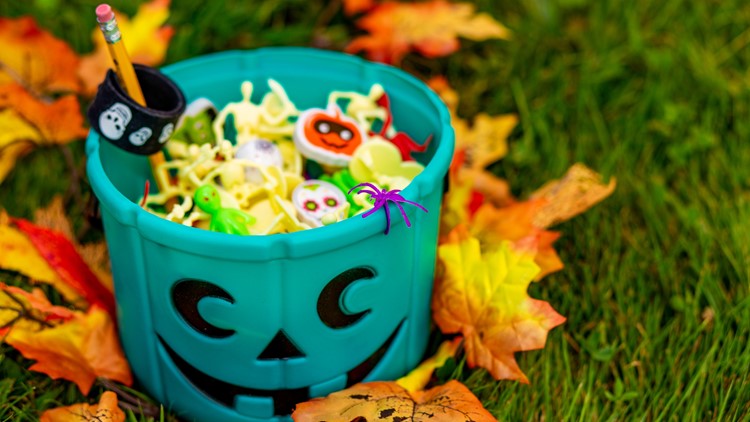ST. LOUIS — Little ghouls and goblins are ready for the most wonderful time of October: Halloween trick-or-treating. It's a night full of costumes, candy and of course, telling jokes. But for some trick-or-treaters, it can be a little harder to take part in the spooky tradition.
You might notice some kids carrying around a blue bucket or houses with teal pumpkins out front. So what does that mean?
If a house has a teal pumpkin outside or even a picture of one in the window it often means they offer non-candy treats like little toys or trinkets. It's part of an initiative called The Teal Pumpkin Project that started in 2012.
"It's a way for people who are handing out candy to let kids with food allergies know that they have food allergy safe treats or basically non-food treats for those kids with food allergies," said Dr. Trina Blythe, a BJC Medical Group pediatrician at Way to Grow Pediatrics.
According to foodallergy.org, 1 in 13 kids has food allergies.
Here are some ideas for non-food treats from foodallergy.org you can hand out during Halloween:
- Glow sticks, bracelets or necklaces
- Pencils, pens, crayons or markers
- Bubbles
- Halloween erasers or pencil toppers
- Mini slinkies
- Whistles, kazoos or noisemakers
- Bouncy balls
- Finger puppets or novelty toys
- Coins
- Spider rings
- Vampire fangs
- Mini notepads
- Playing cards
- Bookmarks
- Stickers
- Stencils
If you want to find a house near you that's part of the Teal Pumpkin Project there's an interactive map for that on foodallergy.org's website. You can put in your address or ZIP code to see the participating houses closest to you. If you want to participate, you can add also your location to the map. To see that map, click here. The website also offers printable signs that you can put in your window on Halloween night. For those, click here.
You might also see a child carrying a blue bucket to collect their treats in. That could mean the child might be non-verbal or is on the autism spectrum.
If you're handing out candy, experts say consider these tips to help kids of all abilities have a fun and safe Halloween:
- Avoid putting flashing lights or loud music outside your house
- Offer items other than candy for those with food allergies
- Be patient with trick-or-treaters of all ages
“You might have a teenager or young adult come to your door as well whose maturity and developmental level might not match their age. So, a lot of time you don’t see the disability,” said Kris Krieger with Easterseals Midwest, in a 2019 interview with 5 On Your Side.



